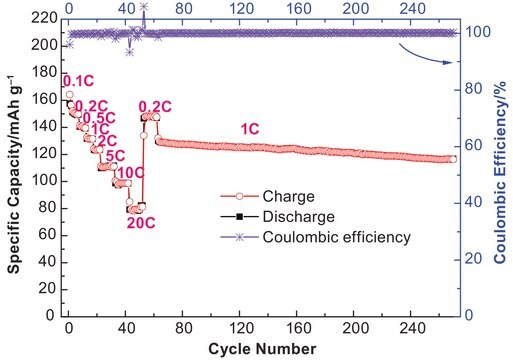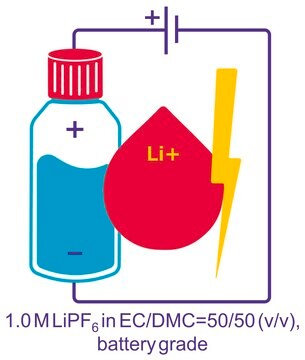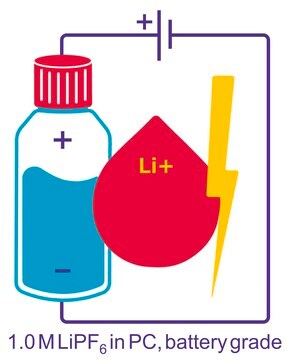推荐产品
化驗
99.9% trace metals basis
形狀
ribbon
反應適用性
reagent type: reductant
環保替代產品特色
Design for Energy Efficiency
Learn more about the Principles of Green Chemistry.
sustainability
Greener Alternative Product
電阻係數
9.446 μΩ-cm, 20°C
厚度 × 寬度
0.75 mm × 19 mm
bp
1342 °C (lit.)
mp
180 °C (lit.)
密度
0.534 g/mL at 25 °C (lit.)
應用
battery manufacturing
環保替代類別
, Enabling
SMILES 字串
[Li]
InChI
1S/Li
InChI 密鑰
WHXSMMKQMYFTQS-UHFFFAOYSA-N
正在寻找类似产品? 访问 产品对比指南
一般說明
應用
適合性
訊號詞
Danger
危險聲明
危險分類
Skin Corr. 1B - Water-react 1
安全危害
儲存類別代碼
4.3 - Hazardous materials which set free flammable gases upon contact with water
水污染物質分類(WGK)
WGK 1
閃點(°F)
Not applicable
閃點(°C)
Not applicable
個人防護裝備
Eyeshields, Faceshields, Gloves, type P3 (EN 143) respirator cartridges
其他客户在看
商品
Professor Qiao’s laboratory lays out recent advances in conversion type lithium metal fluoride batteries. This review explores key concepts in developing electrochemically stable microstructures for wide Li-ion insertion channels.
Professor Qiao’s laboratory lays out recent advances in conversion type lithium metal fluoride batteries. This review explores key concepts in developing electrochemically stable microstructures for wide Li-ion insertion channels.
Lithium-ion batteries (LIBs) have been widely adopted as the most promising portable energy source in electronic devices because of their high working voltage, high energy density, and good cyclic performance.
The critical technical challenges associated with the commercialization of electric vehicle batteries include cost, performance, abuse tolerance, and lifespan.
我们的科学家团队拥有各种研究领域经验,包括生命科学、材料科学、化学合成、色谱、分析及许多其他领域.
联系技术服务部门







